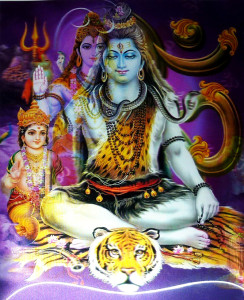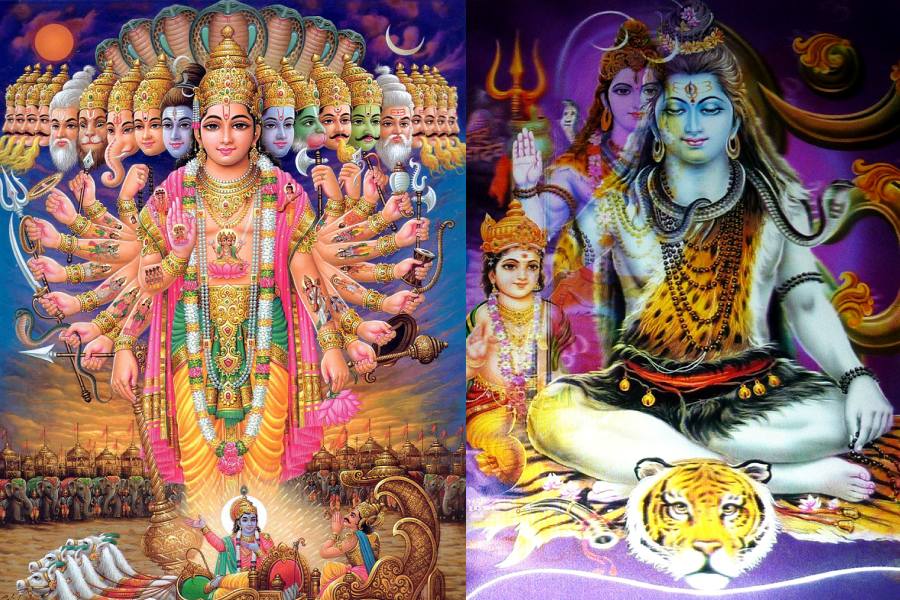
Vedic Astrology is based on the Philosophy that each Human being has three inseparable parts associated with his/her present birth. He has a Body, a Mind, and a Soul. The mind and the body are perishable and get destroyed one day, but the soul cannot be destroyed or die because it is part of The Supreme Soul (God). In Hinduism, the supreme consciousness is called Narayana or Shiva.
Most of us think of ourselves as different from other human beings and different from God because we live in a world of Maya or illusion or untruth, but in truth, the consciousness within each of us is the same as that of the Supreme Soul.
The Philosophy governing Vedic Astrology tells us that our ignorance (Agayna) and falsehood (Asatay) make us think that we are different. It is primarily because we are still not perfect, which means we all have Ripus or Weaknesses that we need to overcome to merge back into the Supreme Soul or to go back to from where we came.
The Six Ripus or Weaknesses according to Vedic Philosophy are:
|
Kaam
|
Desire
|
|
Krodha
|
Anger
|
|
Moha
|
Attachment
|
|
Lobha
|
Greed
|
|
Mada
|
Ego
|
|
Matsarya
|
Jealousy or envy
|
The philosophy behind Vedic Astrology teaches that human beings are the most intelligent creatures that inhabit the earth. All Mighty gives us a chance to improve upon ourselves and get rid of these weaknesses by granting us the life of a human being. The philosophical part of Vedic Astrology further explains: why we take birth, again and again. This is primarily to undergo certain experiences in this incarnation, finish our unfinished karmas (work), and become more perfect. The final state is called Moksha or Nirvana when one individual soul is freed from bondage of birth and rebirth and merges back in the Supreme Soul.
The Vedic system classifies all knowledge into two categories, namely Paraa Vidya (परा विद्या) or Spiritual knowledge and Aparaa Vidya (अपरा विद्या) or Worldly knowledge. The Upanishads refer to these categories in this manner. Gain insights into both these types of knowledge by reading our articles: “Knowledge or Vidya.”
Hindu Astrology can reveal unfinished karmas in 4 primary areas of life, during the present birth. An astrologer can direct the native on the right path, as suggested by God via his birth chart.
The four primary areas of life according to Hindu Philosophy and Vedic Astrology are:
|
Dharma |
All the aspects related to righteousness or religiosity. |
|
Artha |
All the aspects related to work or career. 1. Work done for generating wealth. 2. Work done for welfare and charity. 3. Combination 1 & 2. |
|
Kaam |
All the aspects related to desires, from the most mundane to the most intense ones. |
|
Moksha |
All the aspects related to self-understanding or self-realization and eventually to liberation from the cycle of birth and rebirth, Nirvana. |
Jyotish or Indian Astrology is a method, which involves casting your birth chart by mapping the position of planets and constellations at the moment of your birth. The principles and knowledge applied to do readings/ predictions are taught by ancient Indian seers and sages, like Muni Parashara and Muni Jaimini, etc.
The philosophical foundation of Vedic Astrology tells us that each individual is unique and has a life of his own. There are up to 16 different charts studied for each individual to understand various aspects of one’s life in detail. Vedic Indian Astrology provides with solutions and remedies by evoking positive energies from within us as each of us is a part of the Divine Supreme. There is a divisional chart called the D60 Chart or Shastiamsa chart which also explains the past life journey one had. We can also use this chart to understand what forces playing on a human being and consequently how his present life will be.
Read our article “Amsha rulers of Shashtiamsha” to gain insight into this aspect of using Shastiamsa or D60 chart for present life readings.
Lord Narayana

Join our Online Vedic Astrology Course to understand Hindu Philosophy and Jyotish well.
Purchase Hindu Astrology Video Lessons on Topics of your choice.

